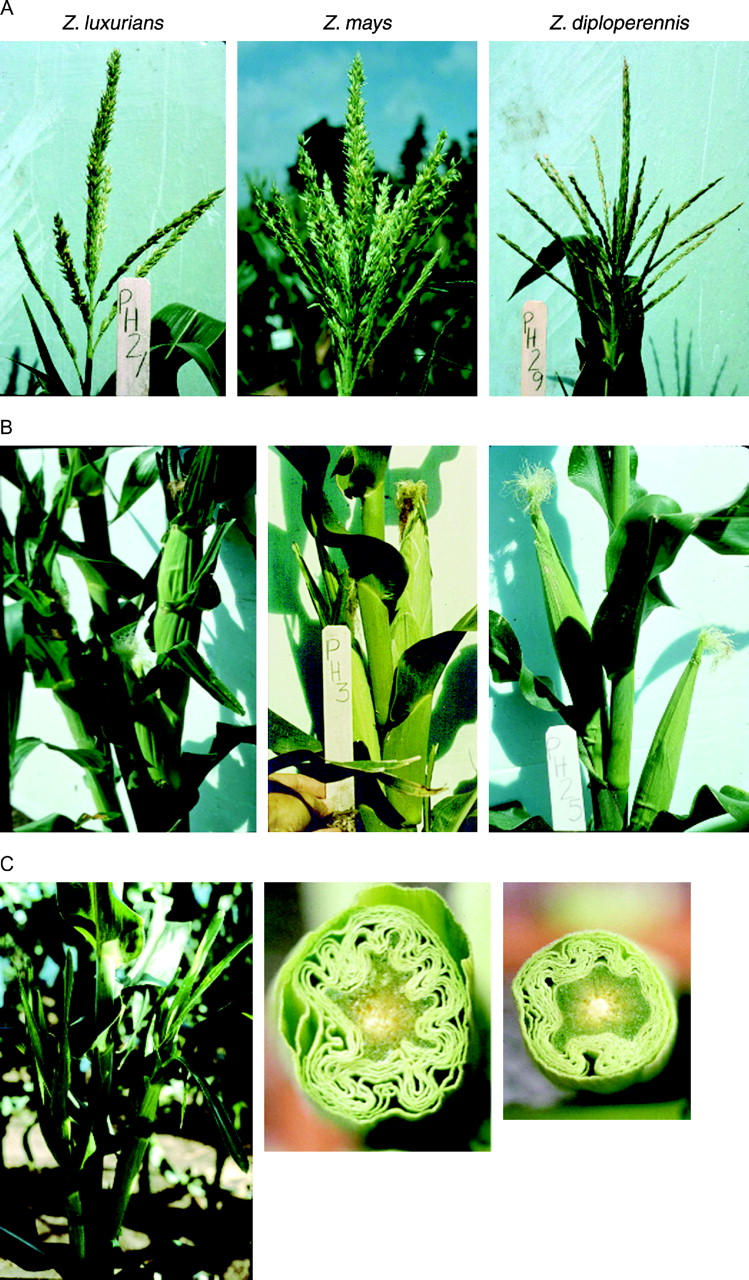Figure 7.—

Reproductive-structure morphology. Phenotypes were consistent within a taxon, with the exception of cytotype 11 (see Table 4). (A) Tassels 2 days after the onset of pollen shed, except for Z. diploperennis, which never shed pollen. Sterile branches are thin because anthers have not exserted. (B) Ears the day after the onset of silk emergence. Z. diploperennis and Z. luxurians ear branches are longer than Z. mays ear branches and are angled away from the stalk. Z. diploperennis husks are pointedly conical with virtually no blades. Z. luxurians husks are cylindrical with long blades that hide the silks from view. Z. mays plant is unusual in having two fully developed ears, whereas the other two cytotypes are typical in having at least that many. (C) Example of very long husk blades (flag leaves). Cross section of ears showing tight packing of Z. diploperennis husks. Both ears were cut at the very tip of the cob, seen as white at the center of each ear. Contemporary photo of Z. luxurians ear was not taken.
